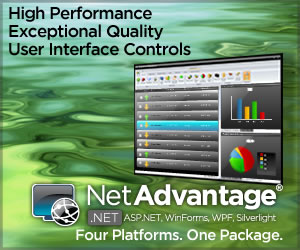High Tech And High Touch
- Saturday, January 1, 2005, 12:00
- Special Features
- Add a comment
 Danny Peltz is executive vice president of Wholesale Internet and Treasury Solutions at Wells Fargo. Wholesale Internet and Treasury Solutions develops and delivers financial services products to the middle market and to corporations. The group, started in 1999, looks for and delivers the technologies that will increase efficiency for customers and help customers simplify their lives. He shared with WFS his views on how to put processes in place to ensure that technology best addresses customer needs.
Danny Peltz is executive vice president of Wholesale Internet and Treasury Solutions at Wells Fargo. Wholesale Internet and Treasury Solutions develops and delivers financial services products to the middle market and to corporations. The group, started in 1999, looks for and delivers the technologies that will increase efficiency for customers and help customers simplify their lives. He shared with WFS his views on how to put processes in place to ensure that technology best addresses customer needs.
How do you approach the deployment of technology to customers? We are usually an early mover and fast adopter. We tend to take the best of breed, and where we cannot find good packaged solutions, we will build something in-house. We are quite focused on using technology as a competitive advantage.
Have you accomplished anything special with your technology?
We have developed our Commercial Electronic Office, which is a single sign-on portal that allows customers to access more than 35 different applications and services. We present a single electronic face to customers across all the business lines we offer, such as credit, purchasing, information, treasury management, trade, trust, and brokerage. On the internal side, we are also responsible for delivering services that make it easier for Wells team members and bankers to sell and service.
What is your product?
A large part of the value we produce for customers is information. Banking and treasury management is very much an information business. Our customers make deposits with us and send money out. Their transactions with us include checks, wires, ACH, investments, sweep funds, and brokerage purchases, and then we provide them with information that can run anywhere from a single page to megabytes over the Web. We deliver more than a million reports a month to our customers, and we probably do more of that over the Internet.
How do you know you are providing what customers want?
We visit customer locations to see how they are doing, watch how they use our services, and listen to what they say. Responding to their demands requires that we continually evolve our site, so we are always making changes and enhancements.
Any surprises?
We thought we were doing a good job by delivering our information on the Web in HTML, PDF, as a download to Excel, in a BAI format – we were offering six or seven different formations. What we found was that even though we provide real-time access, customers were still printing out these reports and putting them into binders, which utterly amazed us. We realized the format they printed it out in didn’t look good, because we hadn’t designed the reports for printing. So we added our logo and a little branding and cleaned up the reports to make sure they printed out the 8.5 x 11 to neatly fit into the binders.
Why are they printing?
They want a physical copy so they have a historical record to go back to, and not just on reports, but every time they do a transaction. I thought they would use the information stored on Wells servers as their backup. But just because you can deliver a technology doesn’t mean people will use it the way you expect.
What else have you learned from watching customers?
We pay attention to their desired path. Our reporting application used to require four clicks to get to the reports. Now through Web services and portlets, we enable our customers to get to that report without clicking, which really improved the customer experience.
Where did your group come from?
In the middle of 1999, during the Internet craze, every single business plan included an Internet component. Our CEO, Dick Kovacevich, decided to have a single group focused on the Internet, and divided it among the major customer segments – wholesale, small business, retail, and investment portfolio. Three of us started the Internet group for wholesale banking, and because we had 35 years experience in this sector, we had a lot of trust from the business unit. Once we built it, customers started coming in droves. We launched in the summer of 2000 and by the end of 2001 we had 11,000 customers. It went from being an idea to becoming a core part of our delivery. We get a lot of industry recognition. When you have that much success and customers enjoy it, your sales force becomes very proud of what you are doing and promotes it even more. Four years ago we had no payment on the Internet. In 2001 we had about $900 billion, and in 2003 we did almost $6 trillion through the CEO portal. People became comfortable with it very quickly.
What’s your secret sauce?
We are a high-touch, high-tech company that likes to leverage technology, and our senior management was willing to make the investment. Plus we are organized to succeed. All of our wholesale banking reports to Dave Hoyt, who is firmly committed to the use of technology. Our group was fully dedicated to Internet development and we all had real-world experience, so we viewed this as “A” channel, not “THE” channel. We have a focus on the customer, not on technology for its own sake, but using technology to simplify our customers’ lives.
Is your development process anything special?
We bring everybody in at the beginning, rather than have the business side toss an idea off the wall to IT and then go back and forth for months. In our model, the business and technology people, plus the folks who will implement and service the system, and QA all start about the same time. We have a common framework that everyone needs to fit into, with some central control like single sign-on, consistent nomenclature, and a central GUI group. We usually do two rounds of usability testing before rollout. We are always busy, but we have a lot of fun doing it.
 Print This Post
Print This Post






